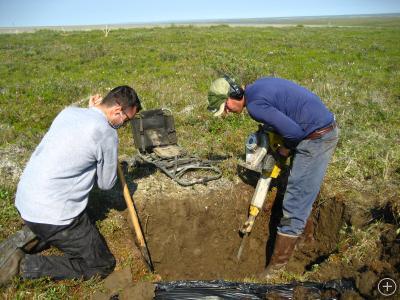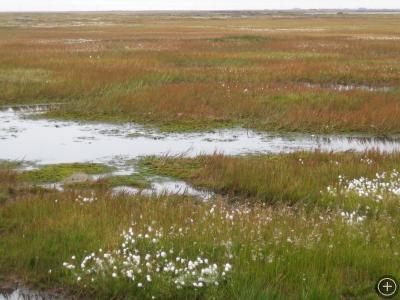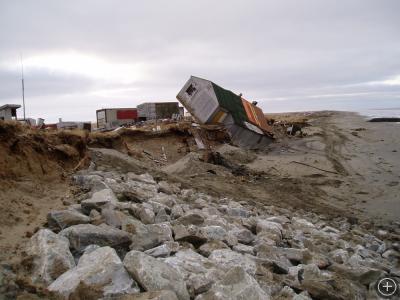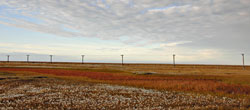Tundra and Permafrost
If you want to dig a ditch in the Arctic, you’d better bring more than a shovel. Even at the height of summer, you may only be able to dig down a foot or two before you hit solid, frozen soil known as permafrost. Permafrost is found in places where the average annual temperature is below about 23°F (- 5° C), including most of the Arctic and all of Antarctica.
Land with underlying permafrost is called tundra. The arctic tundra is stark and treeless. Roots can’t penetrate the frozen soil, so only moss, lichen, and low shrubs can grow there. In summer, the topmost layer of the permafrost melts, leaving behind soggy ground, marshes, bogs, and lakes.
Buildings constructed on permafrost have a notorious tendency to sink, crumble, or tilt like the Leaning Tower of Pisa. That’s because heat and pressure from overlying structures can cause the permafrost just under the structure to melt, turning formerly firm soil into mush.
In recent years, however, permafrost has been melting en masse, thanks to increases in global average temperatures. The zones where permafrost can be found year-round are creeping northward, and permafrost coverage, currently 20 percent of the earth’s land surface, is predicted to shrink drastically in coming years.
A mass-melting of permafrost would contribute significantly to rising sea levels. It might also accelerate global warming by releasing greenhouse gases into the air. Rich in organic material, the soil in the Arctic tundra will begin to decay if it thaws. As it breaks down, it will release large amounts of methane and carbon dioxide—two greenhouse gases—into the atmosphere. Thawing permafrost could thereby result in a positive feedback loop in which thawing causes faster warming, resulting in more thawing.















